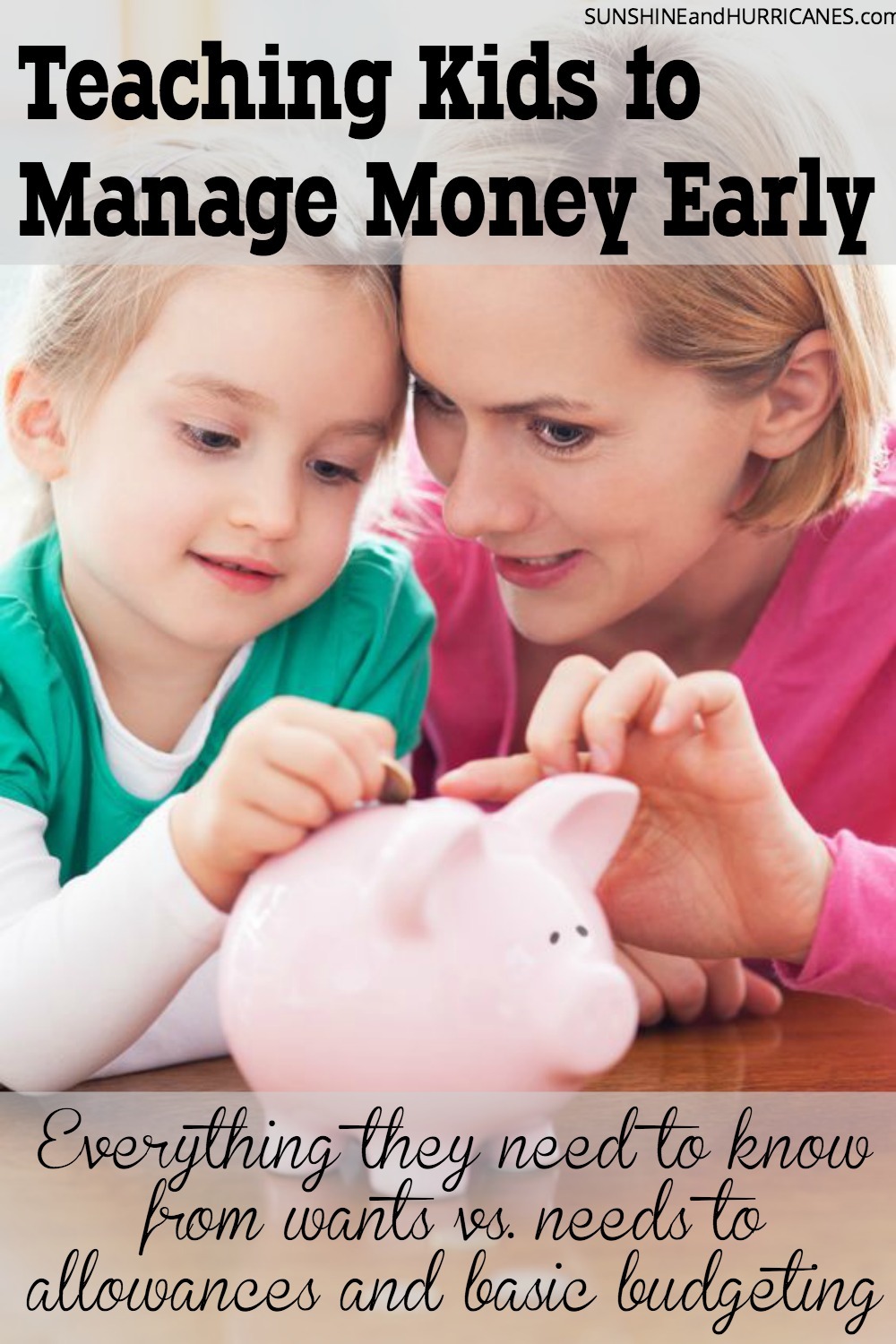Similar to talking to our kids about sex, money conversations are often the ones we know we should be having and yet we tend to put them off. There can be certain stigmas about discussing this topic with children or too often we simply think teaching kids to manage money is too complex.
We need to break out of such mindsets to ensure our children have the life skills they need to become independent and thriving adults one day.
Helping children understand the value of a dollar from a young age, gives them the essential tools to develop the knowledge and habits that will set them up for future financial success.
Teaching Kids to Manage Money – Needs vs. Wants
One of the first monetary lessons to start with for even the youngest of children is differentiating between needs and wants. A simple example: Explain that food and a home are “needs” because they are necessary for your child to be healthy and safe. On the other hand, items like television and treats are “wants” because although they enjoy these things they can live without them.
This lesson can be reinforced when at the store with kids and they ask for a new toy or a snack. Let them know you are at the store that day because the family needs food so nobody is hungry. Setting the boundary that sometimes it is necessary to say “no” to a want creates the foundation for how to make smart, and sometimes tough, choices about the way money should be spent.
You can also build on this lesson over time with your little ones, so that they begin to understand that there are costs to things bought at the store and other family needs. They already know that Daddy and or Mommy has a job, so it will not be hard to explain one of the reasons people work is to earn money to pay for those things. Assure them that there is enough money to meet the family’s needs, but there is not enough extra for all the wants.
To my surprise, I found some fantastic resources for teaching preschoolers about money at nickjr.com. There is a cute and engaging Olivia coloring book that focuses on the difference between wants and needs. You’ll also find a Kai-Lan Coloring Coin Match and several other money management projects along with some make your own bank crafts.
Teaching Kids to Manage Money – Allowance
As children reach elementary school, providing them with an allowance is a crucial step in helping them to grasp the real value of money. There are many opinions about when to start and how much to give. Overall, each parent needs to evaluate when they think their child is mature enough to make the exercise useful and then determine based on their own family budget what is affordable.
Typically suggested ranges are between 5 and 7 years old and paying anywhere from $.50 to $1.00 per year of age. We chose to start our kids at 5 with $1 per year of age per week. Their chores are not tied to this money, they get it no matter what. However, we do impose fines for chores forgotten or other household rule infringements. If they want to earn additional money, then we offer extra chores or other projects we need done as an option. However, they have to be real, we don’t just make up stuff so they can earn extra money.
Also, while some may judge the amount we provide to be overly generous, they do not get to keep the full amount. We chose to implement the share, save and spend approach to help them understand the different parts of money management.
The idea is for the child’s allowance to be divided into money they donate, money they deposit for savings and money they can use for immediate purchases. Sharing their money establishes a sense of giving back and gratitude. Saving money helps with goal setting and potentially even banking if you establish a savings account for them. Spending should be left to your child’s discretion and most experts agree parents should be as hands off as possible about dictating or judging how the child chooses to use this money. Check out Moonjar for more tips and tools to help you implement this approach. Also, here is a simple DIY craft you can do with your kids to make their own save, spend, give jars.
Teaching Kids to Manage Money – Budgeting
Sometime shortly after I got my driver’s license, my mother handed me $20 and a list of about five items to get from the grocery store. I expressed concern to my mother that $20 was not going to be enough. Surprised, my mother asked me “how much do you think a head of lettuce costs?” I replied, “ Well, at least $5.”
Let me reassure you, I was not this off base about how much everything cost. I could easily have told you what I spent to fill my gas tank or how many babysitting jobs it would take to buy the pair of Guess jeans I was dying to own. Unfortunately, it was those basic needs mentioned above like food and shelter where I was clueless.
My parents had gotten half the equation right. As I moved into my teen years, my allowance became my “income” and I was required to cover some of my own expenses like going to the movies or gas. If I wanted something my allowance didn’t cover (like those Guess jeans), then I had to find a way to earn it or go without. Unfortunately, until the “lettuce light bulb moment”, it had not occurred to my parents to include me in financial discussions or to have me actively participate in shopping for our household. As I neared independence, this type of information would be essential to formulate and stay on track with my own budget.
Teaching Kids to Manage Money – Role Model
At the end of the day, no matter what you say to your children about money, it is what you do that gets their attention. It is important to be conscious that your everyday actions back up the lessons you are trying to teach them. Additionally, when the conversations start early and are consistent as they mature, children become much more aware your family’s money values and better understand the reasons behind financial choices. This is likely to encourage them to participate in the process, ask questions and to support the overall goal of adhering to the family budget.
There are many reputable online resources that provide comprehensive guidance and tools for teaching children about money. They are also useful if you need a little help putting your family budget in order before initiating those conversations. Two websites to consider checking out would be Suze Orman’s moneymindedmoms.com or Dave Ramsey’s family financial planning.
Looking for EVEN MORE about money management?
Follow Sunshine and Hurricanes ‘s board Frugal Finds and Budgeting Wisdom on Pinterest.
If You Liked This Post, Definitely Don’t Miss….
5 Ways You’re Wasting Money on Clothes
Saving on Kids Sports and Other Extra Curricular Activities
When it comes to teaching kids to manage money, what do you do in your family?











Jen Walshaw says
I think this post ios ace. Do come and link up to our Fabulously Frugal posts http://www.athriftymum.com/2015/02/fabulously-frugal-1-feb-2015.html
Theres Just One Mommy says
Talking to your kids about money and how to use it wisely is so important!
Nichole {youclevermonkey} says
Great post! I too think it’s important to talk to our children about money from an early age. We have taken a similar approach here and we talk a lot about needs and wants and their pocket money is not tied to jobs but they are expected to contribute to how our family functions. I also make sure they are involved in the contributions we make to different charities and understand why this is necessary. They know they need to try hard to be successful at school as this will give them better choices when they are older. Still working on how to best negotiate the ‘tween’ years but hopefully we’ll get there 🙂